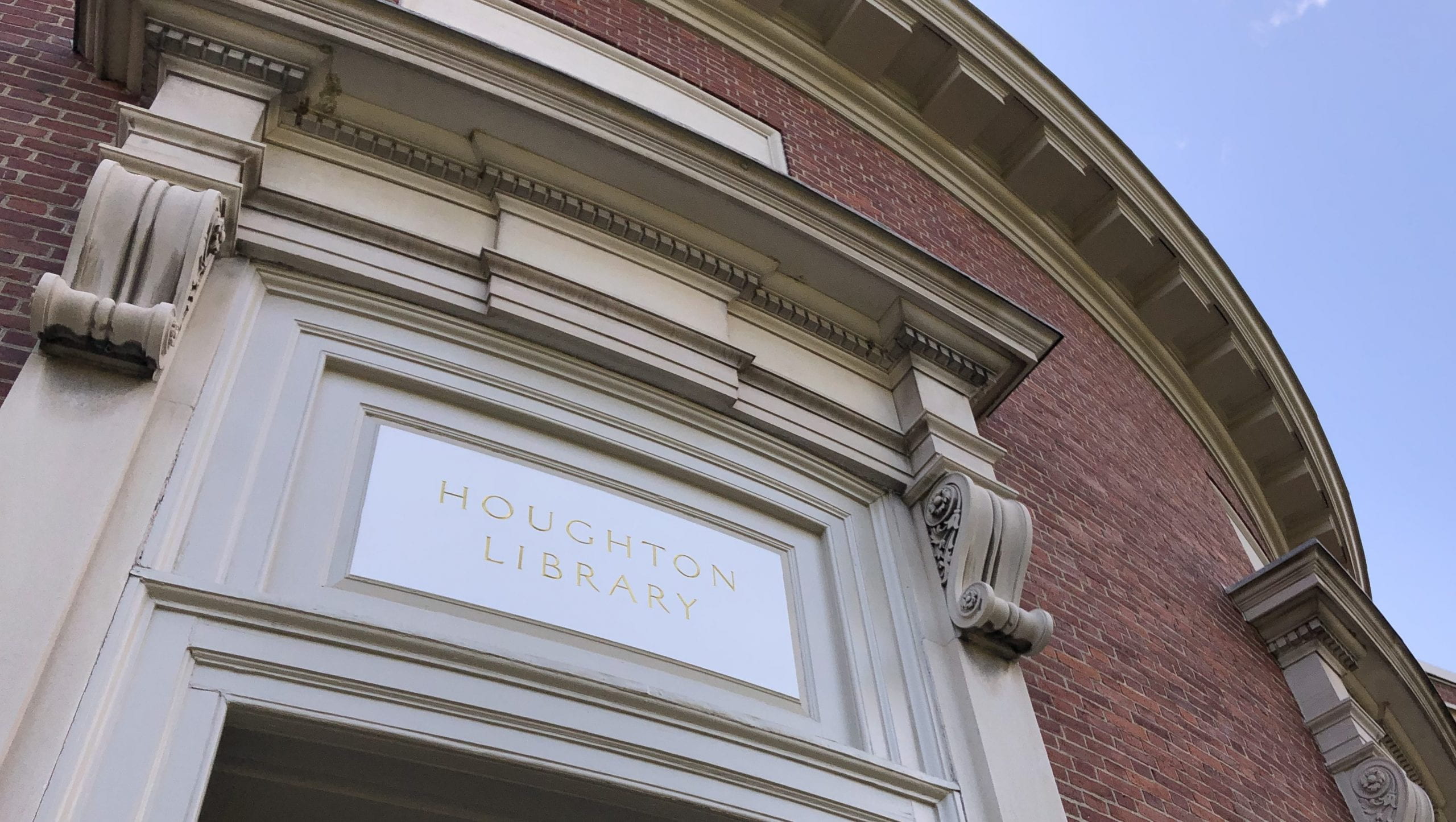This post continues the series, “Behind the Scenes at Houghton”, giving a glimpse into the inner workings of the library’s mission to support teaching and research. Thanks to Magdaline Lawhorn, Association of College and Research Libraries (ACRL) Resident & Project Archivist, for contributing this post.
Library and information professionals love developing workflows! Workflows make our work more manageable by increasing efficiency through step-by-step procedures that accommodate different scenarios. Houghton’s Born-Digital team is also Houghton’s accessioning team. We are fluent in accessioning manuscript collections. But does accessioning change when dealing with born-digital materials? Should it? Given the relative fragility of born-digital media, there are different elements we have to capture and account for in order to achieve a base level of physical and intellectual control of born-digital materials. Putting policies and systems in place to create records that track the handling of born-digital materials allows us to provide a higher level of service to our patrons. Our accessioning workflow is the first step in providing access to materials that are presently inaccessible to interested researchers and scholars.
Our overarching digital preservation goals are to maintain the authenticity and integrity of the materials. So, how do we begin to achieve these goals? We start at the point of accessioning. In addition to the standard types of information captured for analog material, there are five basic elements we are capturing during our born-digital accessioning process: identification; media type; storage size; visual representation; and removal/segregation of materials. In this blog post we will focus on the first three elements.
At the point of ingest analog materials are assigned several alphanumeric or numeric identifiers. First, analog materials are given an Aleph number that uniquely identifies the materials in our catalog, then an accession number that tracks information about obtaining physical and legal custody of the materials, and finally a call number that unifies the library’s collection under a single classification. Melanie Wisner, Accessioning Archivist, researched naming practices before we decided to move forward, establishing a format that suited our needs. The born-digital naming convention is based on the process for creating call numbers for manuscript or archival items and collections.

The case number represents the born-digital component within the parent collection (in the case of a ”hybrid” collection with both analog and born-digital materials). In order to reflect this origin within a hybrid collection, the case number retains a portion of the parent collection’s original call number. Houghton’s traditional manuscript call number is made up of three parts: the manuscript identifier (MS); the principal classification scheme (PCS) based on language or country/culture (Russ for Russian), subject/genre (Mus for Music), or collector (Richardson), and/or the library department (Thr for Theatre Collection); and a consecutive number to follow the PCS (i.e. 101, 102, 103, …109, 110). A standard manuscript call number would be MS Russ 103. Thus the case number has a similar structure: principle classification scheme (i.e. Russ, Mus, Thr, etc.); consecutive number to follow the PCS (i.e. 101, 102, 103,…109, 110); and born-digital identifier (BD). A standard born-digital case number would be Russ103BD. Since we are treating these items individually, we have also assigned them evidence numbers. These evidence numbers help maintain a relationship to the parent collection. Therefore, evidence numbers are built upon the case number structure. Each piece of physical media is assigned an evidence number which is constructed in consecutive order: case number plus consecutive number. Possible evidence numbers would look like the following: Russ103BD01, Russ103BD02, and Russ103BD49.

Evidence numbers are recorded in the Born-Digital Media Log, but the physical objects need to be identifiable as well. There were two labeling methods we considered: (1) marking the carriers with permanent handwritten labels in marker; and (2) printing removal labels. Although we do have a mixture of handwritten and printed box labels within our normal procedures, we thought it best to use printed labels. Generating printed labels creates more standardization, avoids discrepancies based on illegible handwriting, and allows the handler to immediately recognize the distinction between pre-existing description/labels (usually handwritten on the media by the creator). Printed labels are the most accommodating labeling method because you can remove the labels if you make a mistake, they are small enough to fit on most media types, and you are not permanently hiding important original description.

Media type and storage capacity are elements that go hand-in-hand. Assigning every evidence number a media type will help inform us what equipment we will need to invest in to handle different legacy carriers. In our Born-Digital Media Log we have a controlled list of media types to select from, ranging from 3.5-inch floppy disk to internal hard drive (solid state). Logging media type allows us to estimate storage needs. Each specific media type has a maximum storage capacity. For example, a single 3.5-inch floppy disk has the ability to store up to 0.00144 gigabytes (GB) of information. We assume that each and every 3.5-inch floppy we come across contains 0.00144 GB, although we realize that the carrier may contain less. For our procedures, thus far we have decided to err on the side of caution, accounting for the possibility of needing more storage rather than less storage.

In the next blog post we will continue to discuss the accessioning workflow. You will learn more about the fourth and fifth elements, visual representation and material removal, and how the accessioning process might adapt to include a sixth element after the initial born-digital survey concludes.
